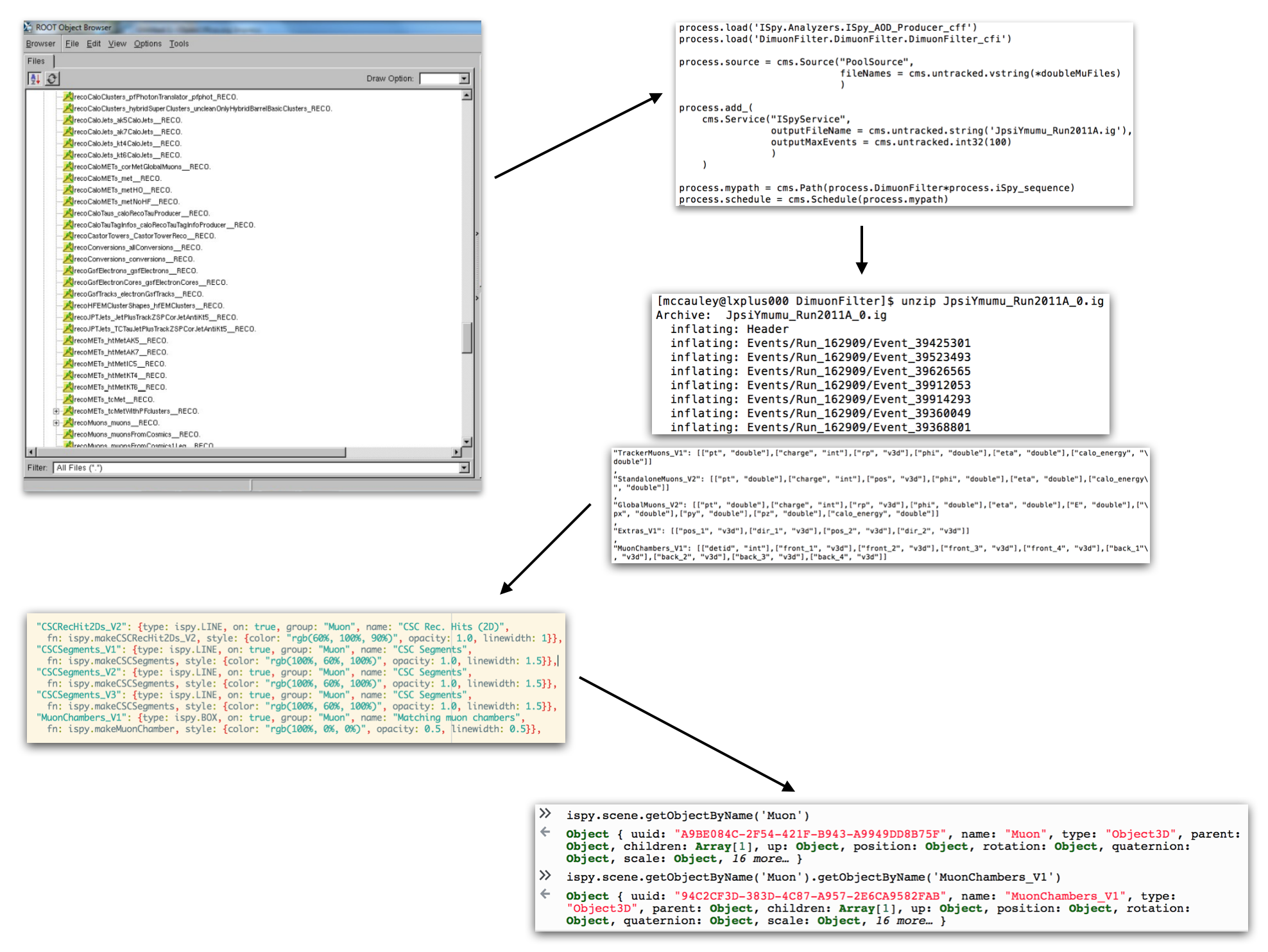WebGL and three.js in CMS
Tom McCauley
University of Notre Dame, USA
28-30 Mar 2017, CERN
Outline
iSpy WebGL, the browser-based display for CMS using WebGL and three.js was first released in December 2014.
Use-cases, requirements, WebGL and three.js, usage, pros and cons, etc. covered in talk at CHEP and talk at HSF workshop in San Diego.
Here, I want to:
- Say a bit on the data models, i.e. going from CMS EDM .root to 3D display in the browser
- Do a quick tour of the features
- Say a bit about the current status and future plans
Data models

Features
- Lightweight client-side application written in JavaScript, HTML, and CSS; local file access via FileAPI
- Views: 3D, tree, table
- Standard event display controls: load event, prev/next event, home view, zoom in/out, view along axes, perspective/orthographic cameras
- Correlated (between table and 3D views) of phyiscs objects
- Touch events enabled so works on mobiles, tablets, etc.
- Switching between WebGL, canvas, and SVG
- bootstrap.js for layout; scaleable for mobile devices
- Default animation sequence
- Import/export of 3D files
- Stereo view for use in Google Cardboard in mobile browser
Demo

Status
- Since first release in Dec 2014 iSpy WebGL has been used by thousands in CMS masterclasses, via CERN Open Data Portal, and in CMS.
- Images and animations
- Latest: update to three.js r83, bug fixes and improvements $\rightarrow$ release (coming soon)
Plans
- Add dedicated R$\Phi$, RZ views
- Improve and extend 3D geometry import/export
- Improve configuration and export of animations
- Improve style configuration handling
- WebGL2, WebVR, ...